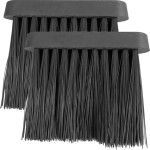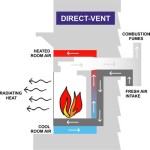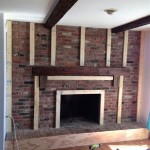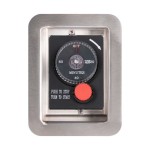Blower Fans for Gas Fireplace Inserts: Enhancing Efficiency and Comfort
Gas fireplace inserts are a popular heating option, offering a convenient and aesthetically pleasing alternative to traditional wood-burning fireplaces. They provide warmth at the flip of a switch, often incorporating realistic flame visuals and modern designs. However, a significant factor in maximizing the heating potential and overall comfort of a gas fireplace insert is the integration of a blower fan system. This article will delve into the functionality, benefits, selection criteria, installation considerations, and maintenance aspects of blower fans specifically designed for gas fireplace inserts.
Functionality and Operation
A blower fan, also known as a circulation fan, is an electrical component designed to enhance the heat distribution of a gas fireplace insert. The primary function of the blower fan is to draw cool air from the room, circulate it around the firebox of the insert, and then expel the heated air back into the room. This process significantly improves the convection heating capabilities of the insert, allowing for a more even and rapid distribution of warmth throughout the space.
Without a blower fan, a gas fireplace insert primarily relies on radiant heat, which warms objects and surfaces directly in front of the unit. This can lead to uneven heating, with areas closer to the fireplace becoming excessively warm while other parts of the room remain relatively cool. A blower fan addresses this issue by actively circulating the heated air, ensuring that the warmth reaches further distances and maintains a more consistent temperature across the entire room.
Blower fans are typically integrated into the design of the gas fireplace insert, often concealed behind a panel or within the unit's housing. They are powered by electricity and usually feature a variable speed control, allowing the user to adjust the airflow and heating output according to their preferences and the size of the room.
Key Benefits of Using a Blower Fan
The incorporation of a blower fan into a gas fireplace insert offers several distinct advantages, contributing to improved heating efficiency, enhanced comfort, and overall user satisfaction. These benefits include:
Enhanced Heat Distribution: As previously mentioned, the primary benefit is the improved circulation of heated air. The blower fan prevents heat from simply rising to the ceiling directly above the fireplace. Instead, it forces the warm air outwards, reaching distant corners of the room and minimizing temperature gradients. This results in a more comfortable and consistently heated environment.
Increased Heating Efficiency: By distributing heat more effectively, a blower fan can contribute to increased heating efficiency. The fireplace insert doesn't need to work as hard to maintain the desired temperature, potentially leading to lower energy consumption and reduced heating costs. The thermostat setting can often be lowered slightly when a blower fan is in use, without sacrificing comfort.
Faster Room Heating: A blower fan significantly accelerates the rate at which a room heats up. The forced air circulation rapidly spreads the warmth throughout the space, eliminating the initial lag time associated with radiant heat alone. This is particularly beneficial in colder climates or when quickly warming a room after periods of inactivity.
Reduced Surface Temperatures: While seemingly counterintuitive, a blower fan can actually help to reduce the surface temperature of the fireplace insert itself. By continuously drawing cool air across the firebox, the fan helps to dissipate heat and prevent the unit from becoming excessively hot to the touch. This can improve safety, especially in households with children or pets.
Improved Air Quality: While gas fireplaces are generally cleaner burning than wood fireplaces, they can still release some emissions into the air. A blower fan can help to mitigate these effects by circulating the air and preventing the build-up of stagnant air pockets near the fireplace. This can contribute to improved indoor air quality and a healthier living environment.
Selecting the Right Blower Fan
Choosing the appropriate blower fan for a gas fireplace insert is crucial for optimal performance and longevity. Several factors should be considered during the selection process:
Compatibility: The most important factor is ensuring compatibility with the specific gas fireplace insert model. The manufacturer's specifications should be consulted to determine the correct blower fan model and size. Using an incompatible blower fan can lead to inefficient operation, overheating, or even damage to the fireplace insert.
Airflow Capacity: The airflow capacity of the blower fan, measured in cubic feet per minute (CFM), should be appropriate for the size of the room being heated. A larger room will require a blower fan with a higher CFM rating to effectively circulate the air. The manufacturer's recommendations should be followed to determine the optimal airflow capacity for the specific fireplace insert and room size.
Noise Level: Blower fans can generate some noise during operation. The noise level, measured in decibels (dB), should be considered, especially for those who are sensitive to noise. Look for blower fans that are specifically designed for quiet operation, often featuring dampened motors and optimized fan blade designs.
Variable Speed Control: A variable speed control allows the user to adjust the airflow and heating output according to their preferences and the current heating needs. This feature provides greater flexibility and control over the heating process, allowing for optimal comfort and energy efficiency.
Energy Efficiency: Look for blower fans that are energy efficient, using minimal electricity to operate. This can help to reduce energy consumption and lower operating costs. Energy-efficient models often feature advanced motor designs and optimized fan blade configurations.
Warranty: A warranty provides protection against defects in materials and workmanship. A longer warranty period indicates greater confidence in the product's quality and durability. Be sure to review the terms and conditions of the warranty before making a purchase.
Installation Considerations
The installation of a blower fan for a gas fireplace insert typically involves several steps and requires careful attention to detail. It is generally recommended that installation be performed by a qualified technician to ensure proper operation and safety. However, for those with experience in electrical work and appliance installation, the following considerations should be kept in mind:
Power Supply: Ensure that the gas fireplace insert has a dedicated electrical outlet with the appropriate voltage and amperage rating. Extension cords should not be used, as they can create a fire hazard.
Wiring Connections: All wiring connections should be made securely and according to the manufacturer's instructions. Use appropriate wire connectors and ensure that all connections are properly insulated to prevent short circuits or electrical shocks.
Mounting and Securing: The blower fan should be securely mounted within the fireplace insert's housing, following the manufacturer's instructions. Ensure that the fan blades are clear of any obstructions and that the unit is properly balanced to minimize vibration and noise.
Testing and Verification: After installation, thoroughly test the blower fan to ensure that it is operating correctly. Verify that the airflow is adequate and that the noise level is acceptable. Monitor the temperature of the fireplace insert and the surrounding area to ensure that the blower fan is effectively distributing heat.
Safety Precautions: Always disconnect the power supply to the gas fireplace insert before performing any installation or maintenance work. Wear appropriate safety gear, such as gloves and eye protection, to prevent injuries. Consult the manufacturer's instructions and local building codes for specific safety requirements.
Maintenance and Care
Regular maintenance is essential to ensure the optimal performance and longevity of a blower fan for a gas fireplace insert. The following maintenance tasks should be performed periodically:
Cleaning: Periodically clean the blower fan blades and housing to remove dust and debris. Dust accumulation can reduce airflow and increase noise levels. Use a soft brush or vacuum cleaner to remove dust from the fan blades and housing. Disconnect the power supply before cleaning.
Lubrication: Some blower fans may require occasional lubrication of the motor bearings. Consult the manufacturer's instructions for specific lubrication recommendations. Use only lubricants that are specifically designed for electric motors.
Inspection: Regularly inspect the blower fan for signs of wear or damage. Check the fan blades for cracks or bends, and inspect the motor for signs of overheating or unusual noise. Replace any damaged components immediately.
Professional Servicing: It is recommended to have the gas fireplace insert and blower fan professionally serviced at least once a year. A qualified technician can perform a thorough inspection, cleaning, and lubrication of the unit, ensuring that it is operating safely and efficiently.
By adhering to these maintenance and care guidelines, users can ensure that their blower fan for gas fireplace inserts continues to provide efficient and reliable heating for years to come. A well-maintained blower fan enhances the overall performance of the gas fireplace insert, maximizing comfort and minimizing energy costs.

Noisy Gas Fireplace Blower Here S How To Replace It Diy

Fireplace Efficiency Blowers And Why You Should Have One

Installing A Fireplace Blower Gfk4 Gfk4a In Heatilator Natural Gas

How To Buy A Gas Fireplace Insert Buyer S Guide From Regency

Pleasant Hearth Circulating Blower For Zero Clearance Ventless Dual Fuel Fireplace Inserts Zcb100 The Home Depot

Why Do I Need A Blower Fan On My Fireplace We Love Fire

Fireplace Inserts Everything You Need To Know Full Service Chimney

Linear Direct Vent Complete Low Profile Design 35 Fireplace With Blower Fan And Multi Function Remote Drl3535 F4183 F4896

How Fireplace Inserts Work We Love Fire

The Valor Comfort Zone Gas Fireplaces








